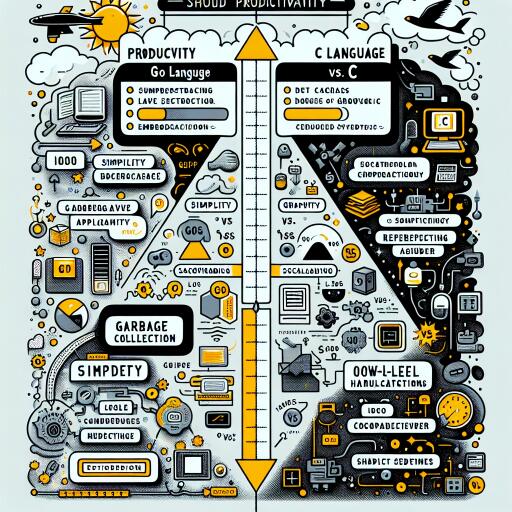Go vs. C: Productivity Comparison for Embedded Applications
In the realm of embedded systems development, the choice of programming language carries significant weight. Embedded applications, running on devices such as microcontrollers, sensors, and IoT devices, have demanding requirements for performance, reliability, and security. These applications often interact directly with the physical environment and carry out critical functions, emphasizing the need for meticulous selection of a programming language to ensure project success, efficiency, and cost-effectiveness.
Historically, C has dominated the field of embedded systems. Renowned for its efficiency and low-level control, C has been instrumental in allowing developers to craft highly optimized code tailored to specific hardware. The language’s direct access to hardware resources is a considerable advantage in embedded systems. However, the trade-off comes in the form of complex syntax and the necessity for manual memory management. Developers must navigate the complexities of memory allocation, pointers, and system-level programming with precision, which can introduce challenges in project execution.
Enter Go, a contemporary challenger in the embedded development landscape. Go proposes a refreshing approach with an emphasis on productivity and ease of use. Its simplicity, readability, and comprehensive concurrency support position Go as a compelling choice for developers interested in optimizing the development workflow. Unlike C, Go features an automated garbage collection mechanism that significantly reduces the risks of memory mismanagement. This, coupled with Go’s rich standard library that supports networking, file I/O, and concurrency primitives, can enormously cut down on development time.
The comparison of productivity between Go and C in embedded applications brings several considerations to the forefront. Go’s streamlined syntax and memory management capabilities facilitate a cleaner, more maintainable coding process. This potentially allows developers to produce more with fewer lines of code. Additionally, Go’s concurrency model provides a simpler avenue to leverage multicore processors, sidestepping the complexities that come with traditional threading models.
Conversely, C’s mature ecosystem, advanced tooling, and high-performance compilers offer a level of granularity and control that may be indispensable for certain embedded projects. Those with strict performance or real-time requirements may find C’s capabilities more aligned with their needs.
The decision to use Go or C in embedded system development thus hinges on multiple criteria. These include the project’s specific requirements, the development team’s goals, and individual preferences among developers. While Go presents several productivity advantages and modern features conducive to faster and safer development cycles, C maintains its relevance through unparalleled control and performance optimization capabilities. The choice ultimately depends on balancing these aspects to meet the project’s unique demands.










